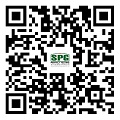Test Items
European Union
- EN71-1 Physical and Mechanical Performance Testing
- EN71-2 Flammability Performance Testing
- EN71-3 Content detection of 19 toxic and transferable elements
- EN71-9 Organic Compounds
- Safety performance testing of electric toys
- Photobiological Safety Performance
- N-nitrosamines and N-nitrosamines
- Bisphenol A migration
- Phenol
- flame retardants
America
- American Toy Safety Standard ASTM F963: Physical and Mechanical Performance Testing, Flammability Testing, and Heavy Metal Content Testing
- Battery Operated Toys Safety
- Toxicology LHAMA, Microbiology (USP61,62, USP51), MSDS
- CPSIA (H.R.4040): Lead, Phthalates
- 16CFR Federal Regulations
- California 65
- FCC (SDOC, ID)
- Packaging Directive TPCH
- TSCA Act
- Canadian Consumer Product Safety Act CCPSA
Middle East GCC Certification
System and factory inspection services
Contact Us +
 Service Hotline
0754-88894222
Service Hotline
0754-88894222
Shantou Perfect testing technology group Co., Ltd. (SPG)
Tel:0754-88894222 Fax:0754-88894229 Email:spg@spg.net.cn Support: 18688981981 Content: Mr Zhang 13924767878 Web:www.spg.net.cn Address:7th Floor, Zuocheng Building, Yuting Road, Chenghai District, Shantou City, Guangdong ProvinceTest Items
- European Union
- EN71-1 Physical and Mechanical Performance Testing
- EN71-2 Flammability Performance Testing
- EN71-3 Content detection of 19 toxic and transferable elements
- EN71-9 Organic Compounds
- Safety performance testing of electric toys
- Photobiological Safety Performance
- N-nitrosamines and N-nitrosamines
- Bisphenol A migration
- Phenol
- flame retardants
- America
- American Toy Safety Standard ASTM F963: Physical and Mechanical Performance Testing, Flammability Testing, and Heavy Metal Content Testing
- Battery Operated Toys Safety
- Toxicology LHAMA, Microbiology (USP61,62, USP51), MSDS
- CPSIA (H.R.4040): Lead, Phthalates
- 16CFR Federal Regulations
- California 65
- FCC (SDOC, ID)
- Packaging Directive TPCH
- TSCA Act
- Canadian Consumer Product Safety Act CCPSA
- Middle East GCC Certification
- System and factory inspection services
Organic tin detection
Organotin is a hazardous substance that is
subject to mandatory restrictions on its use in exports to the European Union,
and is often included in the environmental compliance requirements of buyers.
Common control requirements for organotin include:
REACH SVHC: reaction materials and
derivatives of tributyltin oxide (TBTO), dibutyltin dichloride (DBTC), di
(2-ethylhexyl mercaptoacetate) tin (DOTE), di (acetylpyruvate) dibutyltin
(DBTP), di (2-ethylhexyl mercaptoacetate) tin (DOTE), and tri (2-ethylhexyl mercaptoacetate)
octyltin (MOTE), where C12 is the main carbon atom of the fatty acyloxy group.
When the concentration of SVHC in
"goods" products exceeds 0.1%, information transmission and SCIP
notification obligations need to be fulfilled, and if the total amount entering
the EU is greater than 1 ton/year, notification obligations need to be
fulfilled to ECHA.
REACH Restricted Article:
Organic tin: cannot be sold on the market
when used as a component of a substance or mixture in bio insecticides for free
combination coatings; Not allowed to be listed or used as a component of a
substance or mixture for use as a biological insecticide: for ships, any
facilities used in aquaculture farms; Any appliance or equipment partially or
completely submerged in water shall not be used as a component of a substance
or mixture for the treatment of industrial water.
Trisubstituted organotin compounds (such as
TBT, TPT, etc.): Starting from July 1, 2010, no more than 0.1% of
trisubstituted organotin compounds (calculated by tin content) shall be used in
goods.
Dibutyltin compounds (DBT): Starting from
July 1, 2012, no more than 0.1% of DBT compounds (based on tin content) shall
be used in items.
Dioctyltin compounds (DOT): Starting from
July 1, 2012, daily necessities such as textiles, gloves, shoes, diapers, etc.
shall not use more than 0.1% of DOT compounds (calculated by tin content).
EN71-3: Methyltin, Dimethyltin, Butyltin,
Dibutyltin, Tributyltin, Tetrabutyltin, Octyltin, Dioctyltin, Dipropyltin,
Diphenyltin, Triphenyltin (the migration limit of organic tin varies depending
on the toy material):
Category I: 0.9mg/kg;
Category II: 0.2mg/kg;
Category III: 12mg/kg.
GB/T 39498-2020 "Guidelines for the
Use and Control of Key Chemical Substances in Consumer Goods":
Dioctyltin compound: suitable for textile
products, gloves, footwear or parts of footwear that come into direct contact
with the skin, wall and floor coverings, children's care products, women's
hygiene products, diapers, with a tin content of ≤ 0.1%.
Dimethyltin, diphenyltin, dipropyltin,
butyltin, octyltin, methyltin, phenyltin trichloride, tetrabutyltin,
tetraethyltin, tricycloethyltin chloride, trimethyltin chloride, trioctyltin
chloride, and trin-propyltin chloride: The migration amount of organic tin
compounds in dry, fragile, powdered, or flexible toy materials is required to
be ≤ 0.9mg/kg;
Require the migration amount of individual organic tin compounds in liquid or
viscous toy materials to be ≤ 0.2mg/kg; The migration amount of individual organic tin compounds
in toy materials that can be scraped off is required to be ≤ 12mg/kg.








